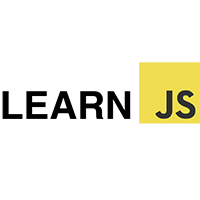

The first way to learn JavaScript faster is to follow the 80/20 rule. With that out of the way, let's learn some ways that you can learn JavaScript a little bit quicker. The most important thing is to learn it well.

Let multipliedNumbers = numbers.map(multiplyByTwo) Ĭonsole.log(multipliedNumbers) // prints out: 6, 10, 16, 18, 4Ĭonst multiplyByTwo = number => number * 2 ĭefine an arrow function divideByTwo which accepts a number and returns that number divided by 2. Different people learn JavaScript at a different pace, so it's okay if it takes you a long time to learn. Using an arrow as a callback compared to a normal function: let numbers = To define an arrow function, we use the () => Ĭonsole.log(greet("Eric")) // prints out Hello Eric!Īnd, in case that we want to do a explicit return of the function and we have only one line of code, we can avoid the return statement and omit brackets too: const greet = name => "Hello " + name + "!" The reason of their name is due to the use of => in the syntax. They can't be used as constructors too.Īrrow functions are often used as callbacks of native JS functions like map, filter or sort. These are anonymous functions with a special syntax, they haven't their own this, arguments or super. A string called myString which contains the sentence Variables are great.Arrow functions are a feature of ES6, their behavior are generally the same of a function.A number called myNumber which contains the number 4.Well-loved by children and teachers the world over, Kid’s Box is bursting with bright ideas to inspire you and your pupils. undefined can be used for this purpose, but it should not be used. Second edition of this popular course for young learners now seven levels including Starter. However, the null value is a different type of value, and is used when a variable should be marked as empty. For example: const newVariable Ĭonsole.log(newVariable) //prints undefined

When a variable is used without first defining a value for it, it is equal to undefined. On top of that, there are two special types called undefined and null. We will get to them in more advanced tutorials. There are two more advanced types in JavaScript. Boolean variables can only be equal to either true or false.In JavaScript, the Number type can be both a floating point number and an integer.We can define several types of variables to use in our code: const myNumber = 3 // a numberĬonst myString = "Hello, World!" // a stringĪ few notes about variable types in JavaScript: Like almost every dynamic language, JavaScript is a "duck-typed" language, and therefore every variable is defined using the var keyword, and can contain all types of variables.


 0 kommentar(er)
0 kommentar(er)
